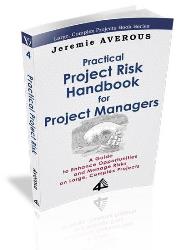Low probability, high consequence risks (called in this White Paper ‘catastrophic risks’) are very significant when one looks at the history of major project-driven organizations. At the single project and at the portfolio level, a single occurrence can change the fate of entire organizations and even industries. Yet these risks are not properly covered by conventional Project Opportunity and Risk management process. In our new White Paper 2015-11 ‘How to Manage Low Probability, Catastrophic Risks: Industrial Risk Management’ we describe some adequate approaches and methods that have been proven to be particularly effective to prevent these risks.
 Avoiding catastrophic events is, on the long term, a key competitive advantage for individual Project organizations; and for the industry as a whole. Insurance can only cover very limited direct impacts and cannot be relied upon to protect the organization from the actual consequential effects of a catastrophic event.
Avoiding catastrophic events is, on the long term, a key competitive advantage for individual Project organizations; and for the industry as a whole. Insurance can only cover very limited direct impacts and cannot be relied upon to protect the organization from the actual consequential effects of a catastrophic event.
We call ‘Industrial Risk Management’ the discipline that seeks to prevent catastrophic risks. This discipline is not commonly placed under the same organizational umbrella than general ‘Project Opportunity and Risk’; it is sometimes managed by the Engineering function, or the Health & Safety function. However because catastrophic events can have a huge impact on Projects as well as entire organizations, even if their probability is relatively low, Project Managers must make sure that the subject is addressed within their Project.
Common methods to analyse possible events (such as FMEA and HAZOP) have limits, and the most dramatic is that they don’t allow considering the combination of independent faults, which is almost always at the root of all catastrophes. Other methods such as Fault Tree Analysis do exist in high reliability industrial organizations that can be used in Project execution environments to prevent the most catastrophic events to happen. These methods need to be supplemented by a robust and transparent Lessons Learned and root cause analysis process.
Catastrophic event prevention methods have been successfully used by Project Value Delivery in a number of instances in Project execution contexts, leading to structural changes in the way some construction activities were undertaken. Read our new White Paper 2015-11 ‘How to Manage Low Probability, Catastrophic Risks: Industrial Risk Management’ to understand what approaches you can use.
Find all these principles of Project Risk Management exposed in a comprehensive manner in our new Handbook,  Practical Project Risk Management for Project Managers (now published – click on the link to see it on Amazon!)
Practical Project Risk Management for Project Managers (now published – click on the link to see it on Amazon!)

